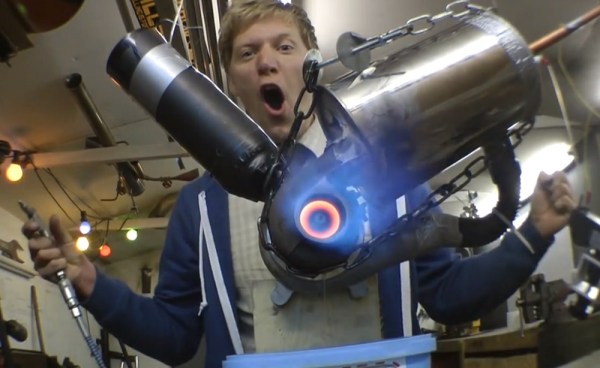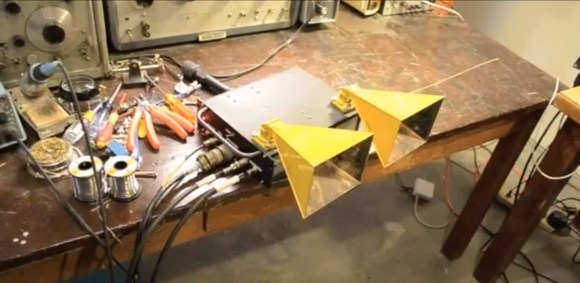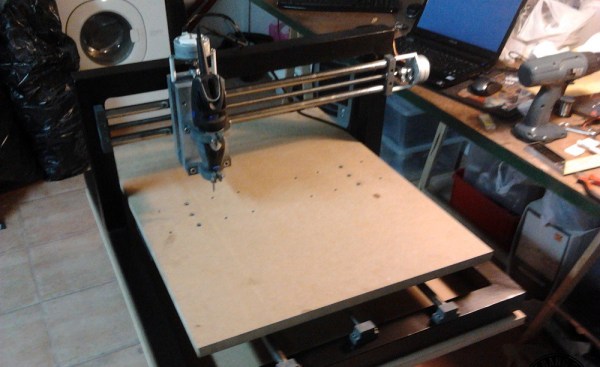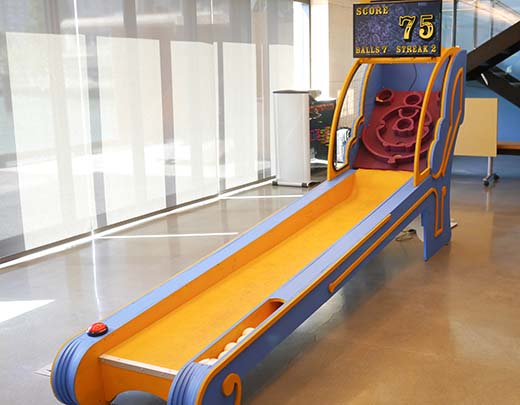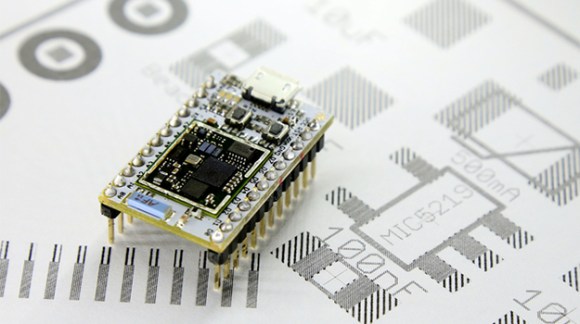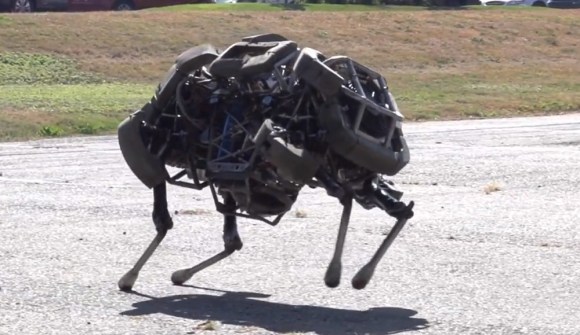
[Boston Dynamics] has released a video of their latest robot, which means it’s time to go hide in bed before this thing comes to get us. The new video features WildCat, which is apparently the evolution of the Cheetah robot we saw last year. Cheetah was an indoor cat, tethered by power, data, and hydraulic lines while running on a treadmill. WildCat has been released to terrorize people explore the great outdoors
Reminiscent of the early videos of BigDog, WildCat is currently powered by an internal combustion engine. The engine drives a hydraulic system, which then actuates the robot’s legs and front/rear pods. The beauty of a system like this is that switching to an electric motor is simple – just replace the IC engine. While we’re sure this would make a much more stealthy cat, weight and run time could be issues. Moving the power system onboard has also slowed down WildCat a bit. Cheetah was able to reach 28 MPH while WildCat can only muster 16 MPH.
WildCat is part of DARPA’s maximum mobility and manipulation program. The research appears to be focused on improving the gaits the robot uses to move at various speeds. The video highlights both bounding and galloping. Slo-mo sections show all four of WildCat’s legs leaving the ground, which is the suspension phase of a classic gallop gait. Control isn’t perfect yet, as WildCat tumbles at one point in the video. It gets right back up though – ready for more.

